Two species of Manta ray
Do you know that there are two species in what we recognize as manta ray in the world? Manta birostris and Mobula alfredi. Manta birostris is recognized as giant manta. the most remarkable difference between two species is there size. Manta birostris can grow more than six meters in width, whereas Mobula alfresdi grow up to five meters.
Mobula alfredi usually swim around reefs in group, and most mantas seen in places that are famous for manta such as Hawaii island, Palau, Maldives, Yap, Ishigaki and Iriomote islands of Japan are Mobula alfredi. Manta birostris is oceanic species that the places you can spot them are limited such as Socorro islands, Mexico and Ogasawara island, Japan where it takes more than 24 hours to get by boat.
Although Koh Bon is within one-hour distance by speed boat, almost all Mantas that appears around there are Manta birostris. Moreover, It is high probability that you spot them in season. It is a quite rare island.
Where is Koh Bon?
Koh Bon is located in Andaman sea, Thailand. Koh means island in Thai. So, it is called Bon island. It locates 23km north from Similan Islands which are popular dive sites. You can reach the island by liveaboard for divers from Phuket or Khao Lak or having a day trip from Khao Lak.
West ridge of Koh Bon
The site you can probably meet manta is called west ridge. Koh Bon has protrusion to the west continuing to the ridge in the water. The entry is from the north side or south side of the ridge depending on current. We will be heading to the deep part of the ridge along the current, and wait for them on the ridge. When they don’t come to the ridge after we wait for a while, we then return to a shallow part and wait them again. You may meet manta anywhere in the site, you have to pay attention to everywhere from the entry to the exit.
Manta appears in silence. You may be impressed by them. You can be aware of the difference in there size if you have seen Mobula alfredi somewhere such as Maldives or Palau. They sometime swim on the surface of the rocks with colorful soft corals. Why don’t you come meet them.
Other attractive features
Unfortunately, There is no 100% guarantee in the nature. You have nothing when you miss Manta at this site? That’s not right. You still have many things to see in the west ridge. You can enjoy the scene while waiting for them.
Carpet of soft corals
There are soft corals prospering all over the site the same as other sites in Andaman sea in Thailand. The special feature in west ridge is that short corals dominate the site spreading every surface of rock. They form beautiful carpets with pastel colors such as light pink, light yellow and light blue. Groupers and Napoleon fish are swimming over the carpets. damsels and butterfly fish are dancing over the soft corals. You may find smalls gobies scampering around if you pay attention to each coral.
Clouds of arrow cardinalfish
You can admire a scene that an enormous number of cardinalfish (Rhabdamia gracilis) cover every surface of the ridge, although it depends on a timing. A combination of colorful soft corals and cardinalfish shined by the light of your torch or strobe. Amazingly beautiful. Please don’t forget to bring your torch with you. Use strobes when you take photos, and you can a beautiful photo with a shine.
Predators
There are lots of predators swimming around the ridge, like blue fin trevally (Caranx melampygus), Lethrinus olivaceus, Lutjanus decussatus and so on. You can observe them plunge into the reef in a group to feed themselves especially in a season when arrow cardinalfish are prospering. They dart into the flock with so strong impact that the arrow cardinalfish are splashed around. That is quite dynamic.
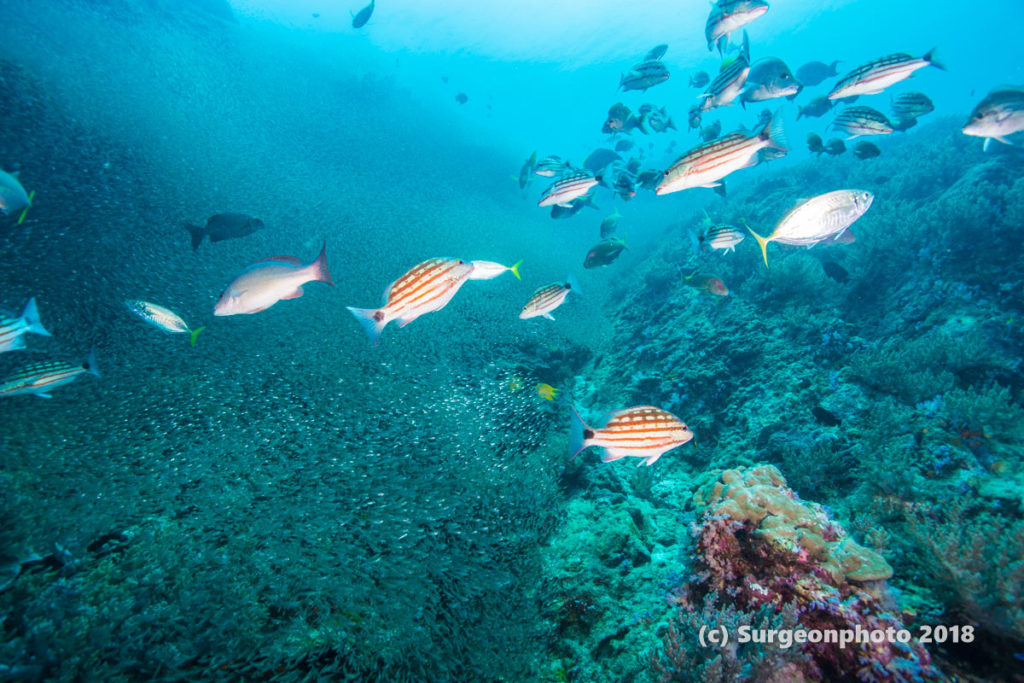
Big rocky coral
There is a huge rocky coral on the north side of the ridge. A side and gap of the rock is filled with beautiful soft corals. Schools of arrow cardinalfish and golden sweeper (Parapriacanthus ransonneti) live in and around the gap. Blue-spotted rockcod (Cephalopholis miniata) and lion fish are also seen around the rocky coral.
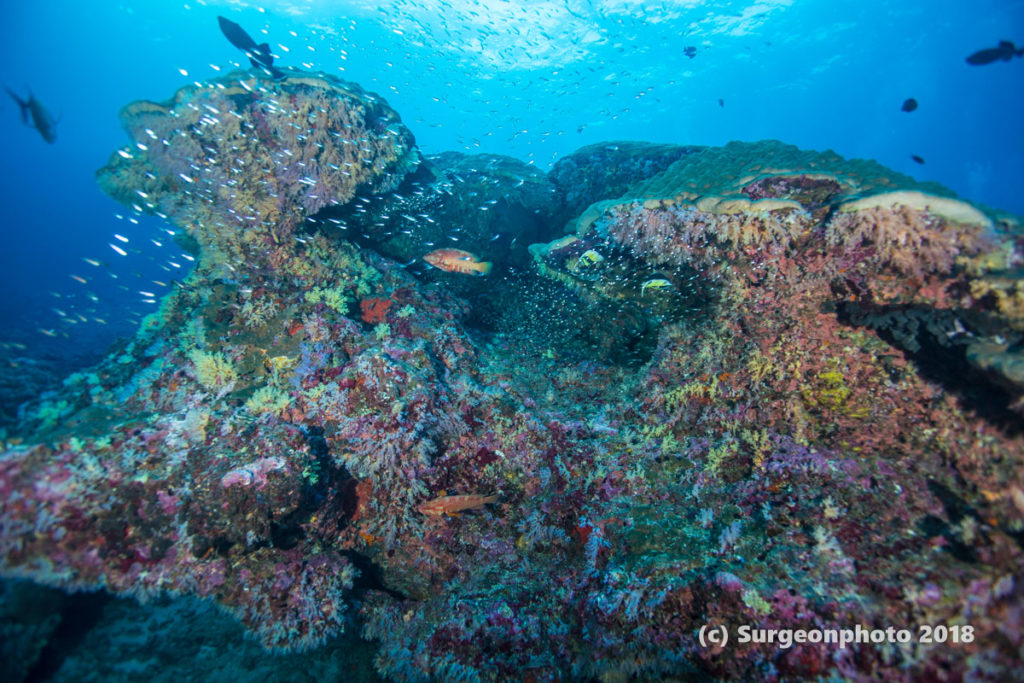
Koh Bon pinnacle
There is a pinnacle a little away from shore on the north side of the ridge. Manta is possibly seen at this pinnacle also. It is not so often to have a chance to go, because the top of this pinnacle is at 18 meters deep. The rocks are covered with beautiful soft corals the same as the west ridge, and schools of fish such as blue fin trevally swim over the rocks here and there. You have to choose to dive around this pinnacle or the main ridge because you don’t have enough time to dive in both places in one dive.
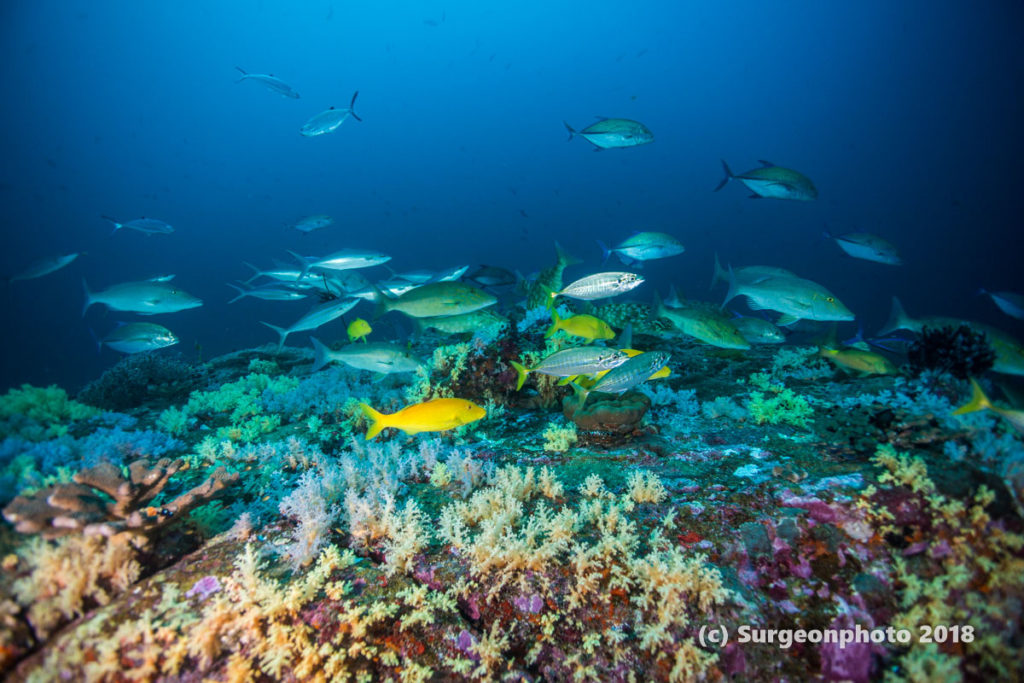
Small creatures
Small creatures are also interesting. you may spot Nemateleotris exquisita, endemic species of Andaman sea or Indian ocean.
How to distinguish Manta birostris and Mobula alfredi
They are so alike except in their sizes that it is difficult to tell which is which. Since you will come to the rare place where you have a high chance to see Manta birostris, you might as well learn how to distinguish the two species.
Belly
The easiest way to recognize the species is patterns of their belly when you dive. Let’s count the slit their gills from the head. You will find five slits in both species. Manta birostris clearly has a large black spot on and along the fifth slit. Mobula alfredi have no spot or small spot at most along the fith slit.
You can also tell from their mouths. Manta birostris has some black parts around its mouth while Mobula alfredi‘s mouth is all white.
Back
When you see their back, check the pattern they have. The front lines of white patterns are parallel to its mouth in Manta birostris, while ones are angled with the mouth, shaping an arrow in Mobula alfredi.
Now you can tell which is which except when they are black manta that the whole body is black. Plese come to the island and try the tips!
One more trivia
Mobula alfredi was Manta alfredi before 2017. Manta has been changed to Mobula in 2017. There is a species whose zoo logical name is Mobula mobular, usually called mobula by divers. They are smaller and flatter than the two mantas, and have grayish color. A study of alfredi’s gene revealed that they are completely included in a group which Mobula mobular belongs to.
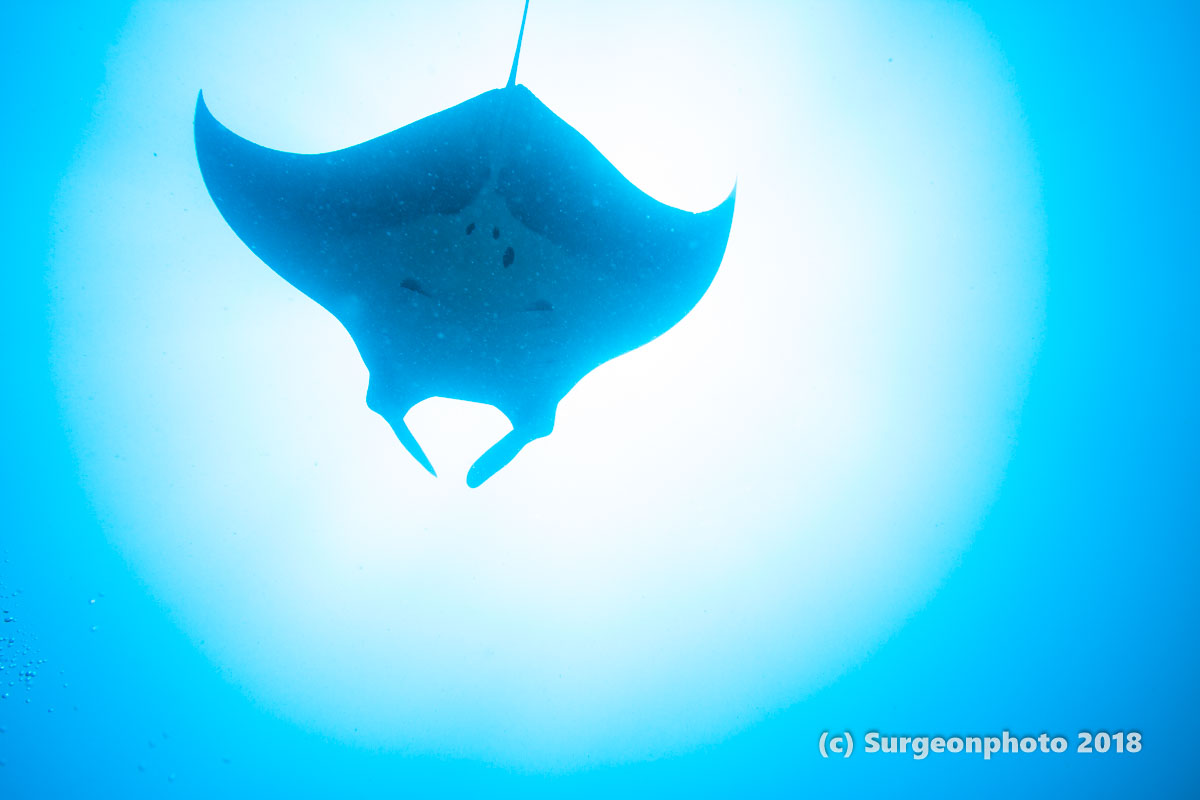
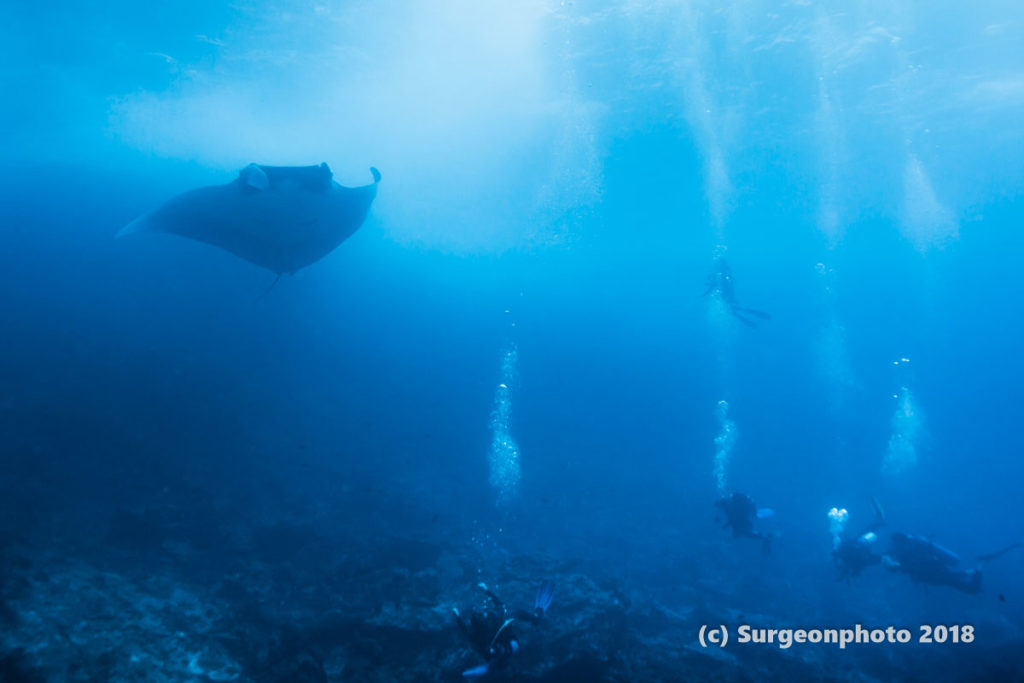
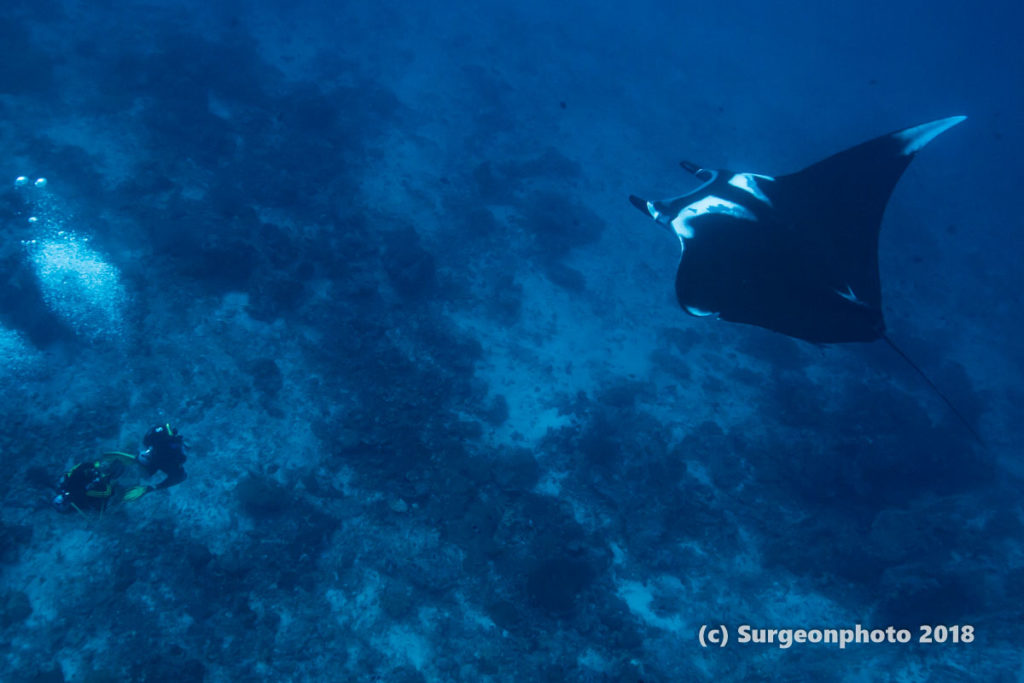
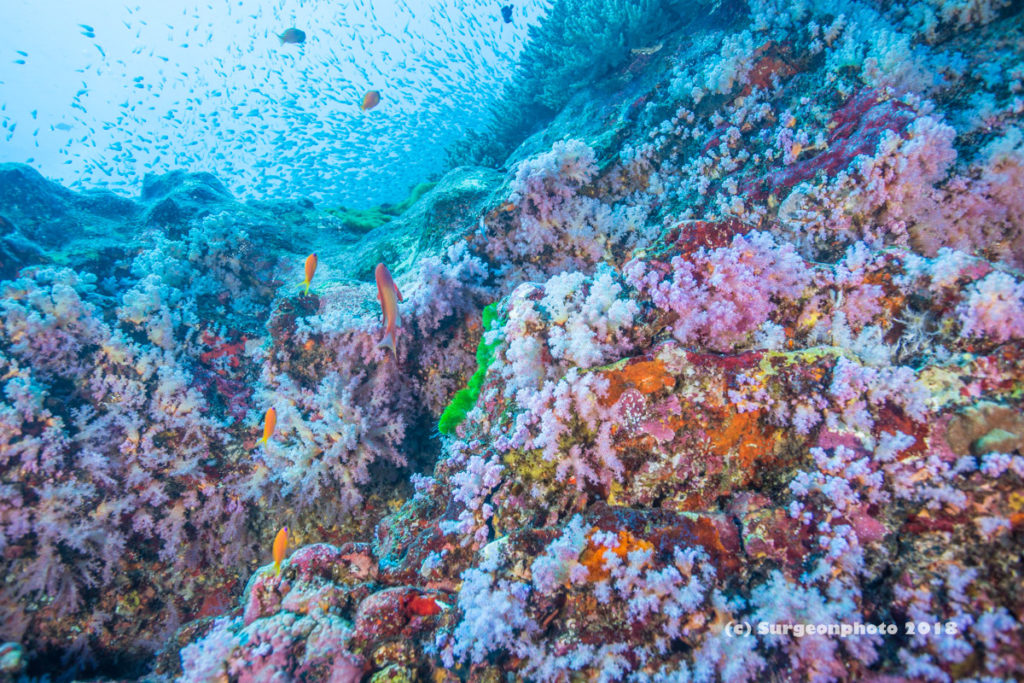
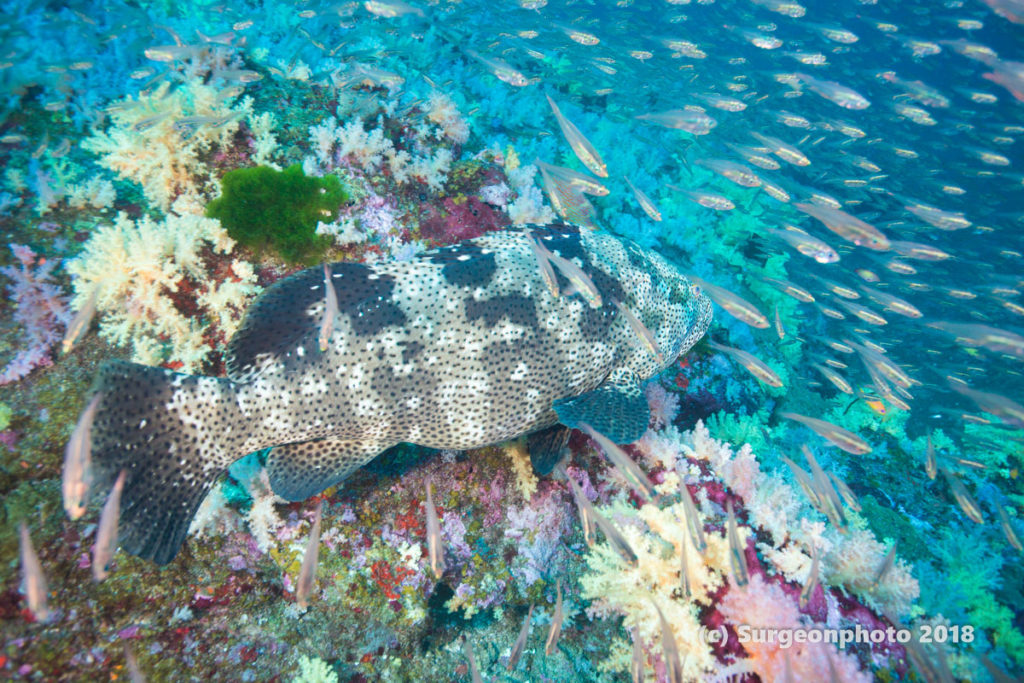
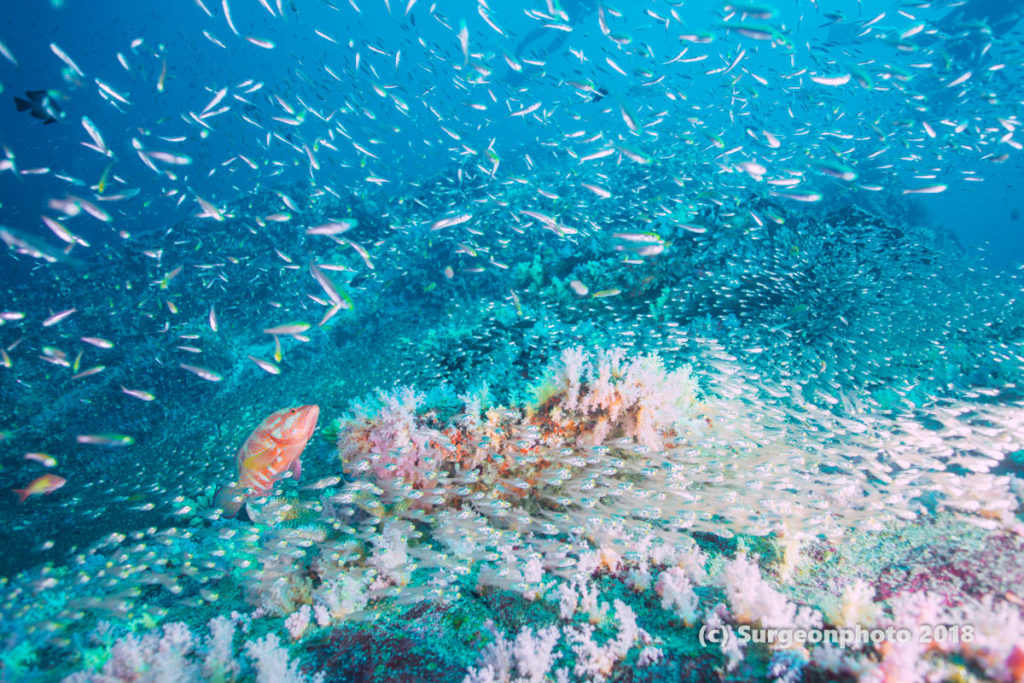

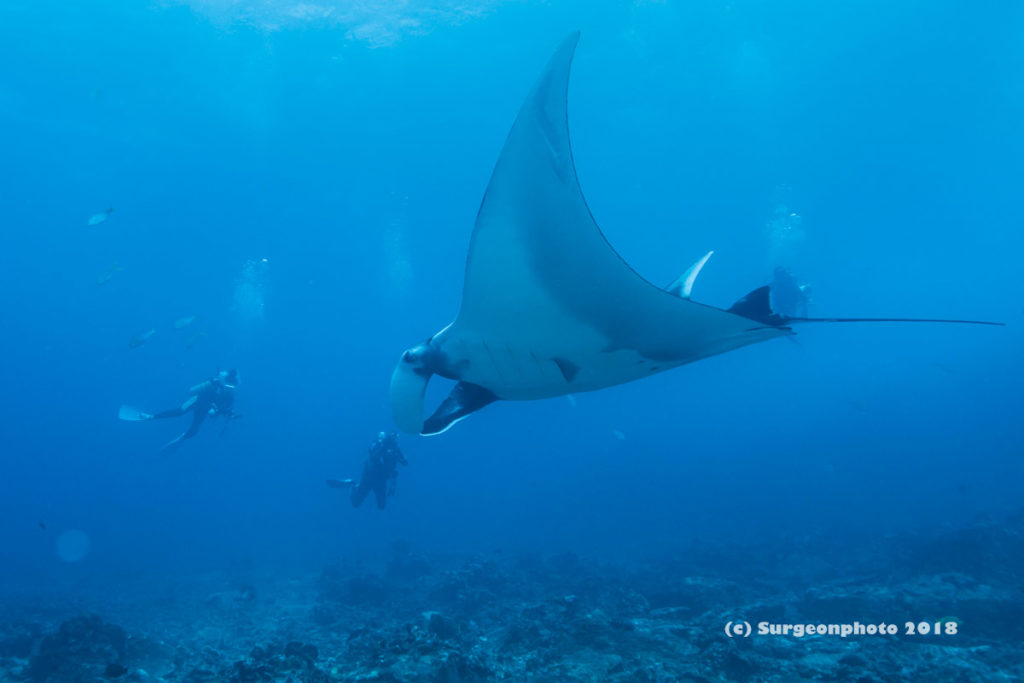
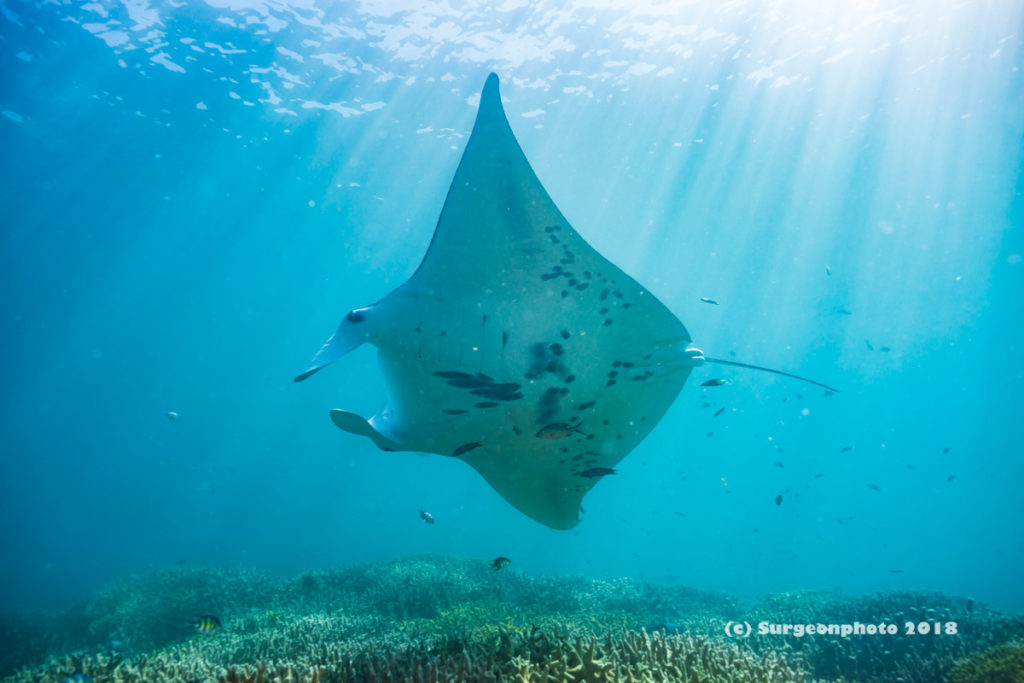
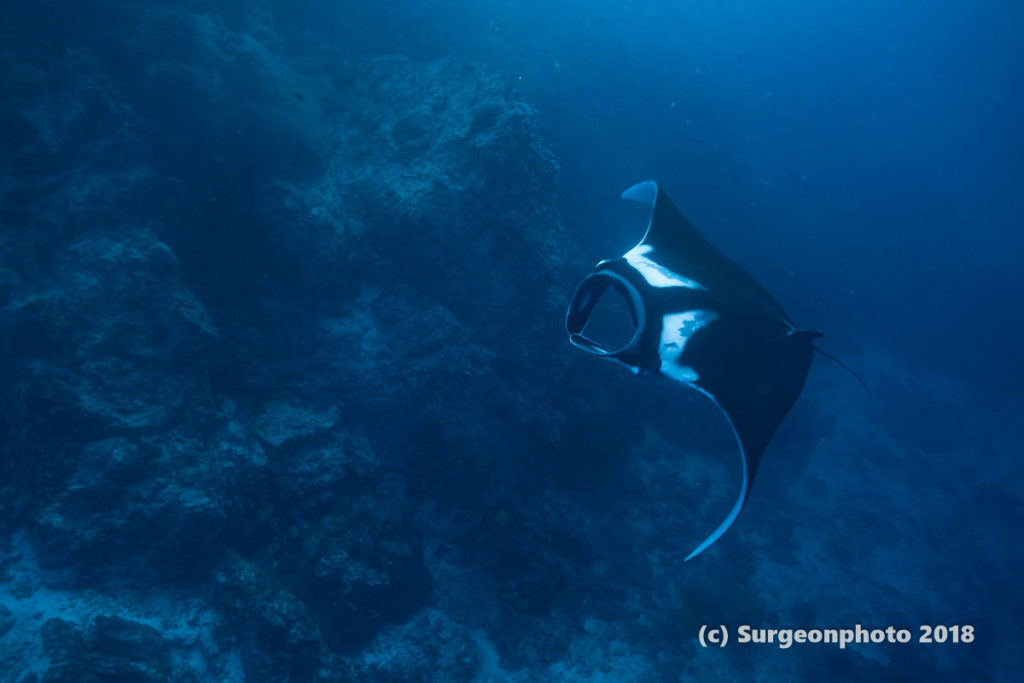
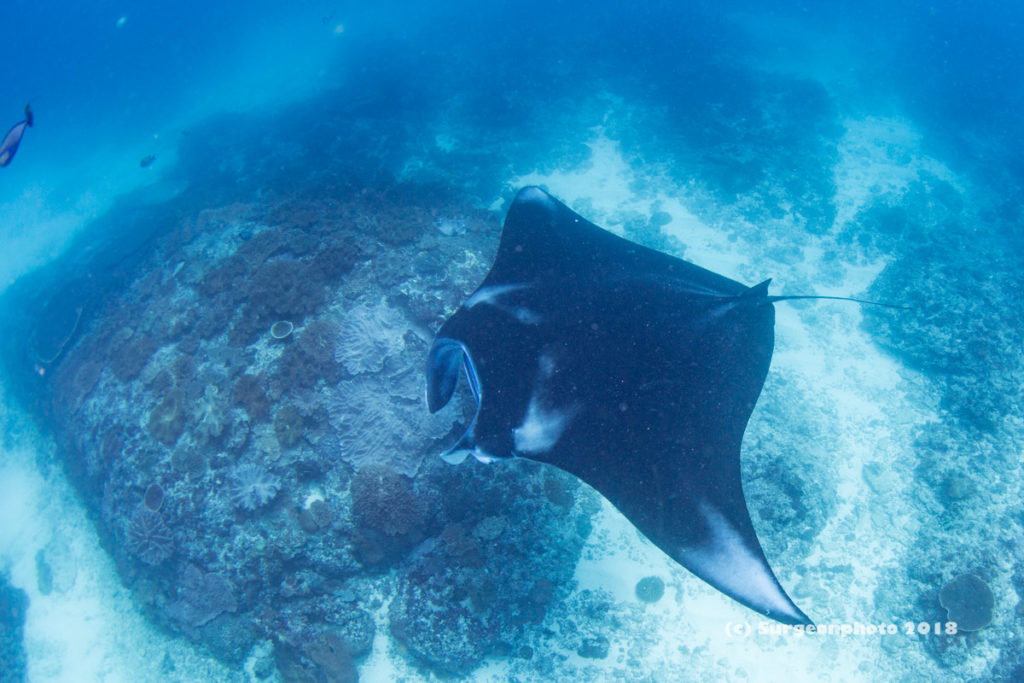
コメント